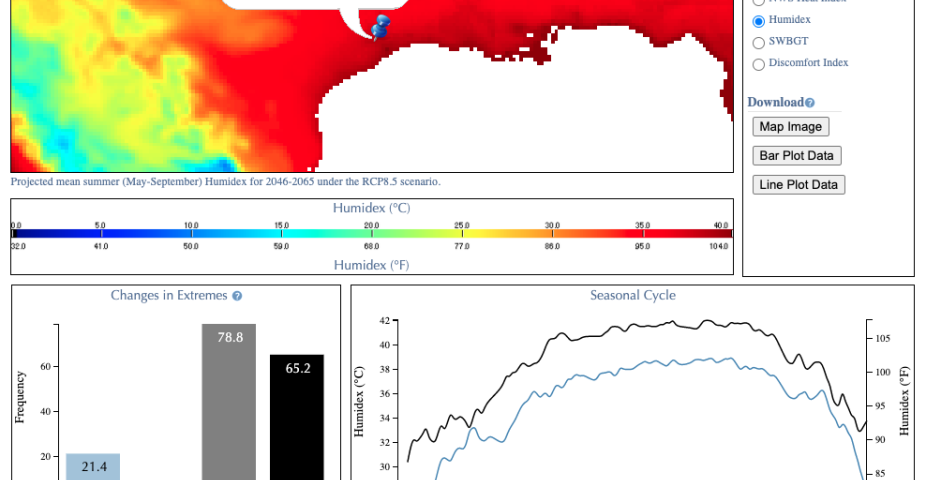Extreme Heat Climate Inspector

The Extreme Heat Climate Inspector is an interactive web application which expands GIS mapping and graphing capabilities to visualize projected heat. The data displayed in this app were produced at NCAR for the NASA-funded study, "System for Integrated Modeling of Metropolitan Extreme heat Risk" (SIMMER).
The System for Integrated Modeling of Metropolitan Extreme heat Risk (SIMMER), a NASA-funded study conducted by NCAR scientists in 2010-2014, focused on extreme heat, human health, and urban vulnerability in present and future climates. The project quantified the importance of explicitly characterizing urban properties to improve urban meteorological simulations, and the role of climate change in the future heat stress across the United States and southern Canada. Climate model simulations from SIMMER suggest high heat stress days and nights in cities across the U.S. and in some rural areas will increase substantially by the mid-21st century.
For simulating future climate and extreme heat, we used the Community Land Model (CLM) coupled to an urban canyon model to quantify present-day (PD; 1986–2005) and a projection of one possible manifestation of mid-21st century (MC; 2046–2065) rural and urban heat stress for boreal summer over the U.S. and southern Canada at fine spatial resolution (1/8° in latitude and longitude). The Weather and Research Forecasting model (WRF) was used to downscale a Community Climate System Model (CCSM4) 20th century ensemble member for PD and a CCSM4 RCP8.5 (representative concentration pathway) ensemble member for MC to provide a consistent set of atmospheric forcing variables for CLM.
We implemented five commonly used heat stress indices directly in the model. These are the National Weather Service Heat Index, Apparent Temperature, Simplified Wet Bulb Globe Temperature, Humidex, and Discomfort Index. Heat indices are calculated for both rural (vegetation/soil) and urban areas.
High heat stress days (hot days) are defined as the number of days that the daily maximum air temperature exceeds the 95th percentile of the 1986-2005 rural daily maximum temperature. High heat stress nights (warm nights) are defined similarly using the 1986-2005 rural daily minimum temperature.